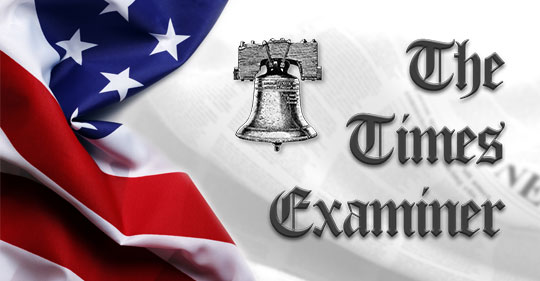April 30 Was the 50th Anniversary of the Fall of Saigon

Vietnam was part of French Indochina from 1887 until 1954. This included Vietnam, Laos and Cambodia. The area now called Vietnam consisted from north to south of Tonkin, Annam, and Cochinchina. Cochinchina was roughly equivalent to South Vietnam. The Japanese occupied Indochina during the World War II years of 1943-1945.
Following the Russian Revolution of 1917, and the victory of Bolshevik Communist “Red” forces under Lenin and Stalin over the White Army’s coalition of Tsarist loyalists, capitalists, and anti-Bolshevik moderates in 1923, the foreign policy of the Soviet Union (USSR) was driven by aggressive ideological Marxism. Communist doctrine was ruthless under Lenin and Stalin and called for an eventual global triumph Communism dominated by the USSR.
Ho Chi Minh was a young North Vietnamese Marxist who left Vietnam for France in 1911, By 1920, he had become one of the founding leaders of the French Communist Party. A devotee to Lenin’s ruthless pursuit of power, he went to Moscow in 1921 and was by 1924 a dedicated Stalinist and paid agent of the Soviet Comintern. Back in Vietnam in 1925, he established the Indochinese Communist Party in 1930. Later Moscow assigned him to organize Communist parties throughout Southeast Asia, including Thailand, Singapore, Malaya, and Indonesia. These were to be parts of a Southeast Asia Communist Union subordinate to Moscow. Moscow and Ho Chi Minh clearly had a “domino” plan of conquest, which would later include South Vietnam, Cambodia, Laos, Thailand, Malaya, Singapore, and Indonesia.
Ho did not return to Vietnam until 1941, when he became the leader of the Communist led Viet Minh Vietnam independence movement opposing the Japanese occupation of Indochina. Following Japanese withdrawal in August 1945, Ho Chi Minh overthrew the de jure government of Vietnam (Tonkin and Annam), which had been nominally ruled by Emperor Bao Dai (born 1913, reigned 1926-1945). Ho assumed the role and title of Vietnam’s first President and declared independence. When the French returned, however, he moved his government and Viet Minh forces to the countryside and commenced guerilla war against the French.
Mao Zedong became the Communist dictator of mainland China in 1950 after driving Chiang Kai Shek’s Nationalist forces from the mainland to Taiwan. China began to assist Ho Chi Minh and the Viet Minh with weapons and advice. Chinese artillery, anti-aircraft guns, and munitions were an unexpected and decisive factor in defeating French Foreign Legion and French Union forces at the Battle of Dien Bien Phu on May 7, 1954. Dien Bien Phu was an isolated village in mountainous NW Vietnam, close to the border of Laos. French forces were caught in an extremely disadvantageous position and had to be supplied and reinforced by air drops. A substantial part of these airdrops were done by CIA aircraft largely manned by U.S. Air Force Reserve and National Guard personnel or former Air Force crews hired by the CIA. The Viet Minh were also able to bring 80,000 well-supplied men to oppose French forces that never numbered more than 14,000. The French lost over, 4,000 dead or missing and nearly 12,000 captured, of which over 6,600 were wounded.
The unexpected defeat at Dien Bien Phu, however grievous and embarrassing, was not enough to force France to give up Indochina. The French-Indo China War was a Two-Front War. The war was really lost on the French home front. A massive Communist propaganda and agitation campaign over 9 years relentlessly affected the war weary French, who were already struggling over troubles in Algeria. The Viet Minh and Ho Chi Minh’s victory came in a French Parliament loaded with left of center deputies and influenced by Communist propaganda and agitation.
The Vietnam War fought by the United States from 1964-1973 was also a Two-Front War. According to a high-ranking Russian intelligence defector, Col. Stanislav Lenev, the USSR invested more money organizing anti-war activities in United States than they spent on arming and training Communist insurgents in Vietnam.
“The GRU and KGB helped to fund just about every antiwar movement and organization in America and abroad, and during the Vietnam War, the Soviet Union gave $1 billion to American antiwar movements, more than it gave the Viet Cong.” ($1 billion during the peak of the Vietnam War would be over 6.0 billion in 2025 dollars.)
Numerous U.S. government sources also document the role of Communist backed and funded agitation and propaganda influences during the Vietnam War. This is an important but much avoided subject. See Louis A. Fanning, Betrayed in Vietnam, 1976, and my own book, Lessons from the Vietnam War, 2009, 2018.
Ho Chi Minh often tried to give the impression that he was simply a nationalist. Although he used non-Communist nationalists to gain power, he considered them enemies, and began destroying the Vietnamese Nationalist Party in July 1946. According to President Nixon, following Ho Chi Minh’s 1954 victory over France, he had General Giap execute 50,000 political opponents, mostly non-Communist Nationalist leaders. A few escaped to France. Ho also introduced agricultural reforms in 1956 in which at least 60,000 “landlords” were killed. The reforms were tangibly unsuccessful, and the deaths resulting could have reached as high as 500,000. President Eisenhower correctly identified Ho as a dedicated Communist. Again, Ho was an admirer of Lenin’s ruthless methods and deceptions used in gaining and maintaining power.
The Geneva Accords of July 21, 1954, divided Vietnam at the 17th Parallel and settled little else. North Vietnam still roughly consisted Tonkin and Annam, and South Vietnam was roughly consistent with Cochinchina. Vietnam-wide elections were discussed. The U.S. and UK insisted on United Nations supervision, but North Vietnam would not agree. There was thus no written agreement for an election, and no non-Communist in his right mind believed it could be a fair one. Migration back and forth was allowed for a period. Over one million people fled North Vietnam for South Vietnam, mostly Catholics aware of Communisms anti-Christian nature. A few hard-core leftists with connections to North Vietnam went back to prepare for more war.
This is getting a bit ahead of the narrative, but to understand the next paragraphs it is important to know some of the end of the story. In December 1972, Nixon had essentially won the war by strategic bombing of North Vietnam. This resulted in Paris Peace Accords signed on January 27, 1973. Congress, however, failed to support the treaty’s promise for South Vietnamese military funding.
The Vietnam War (1964-1973) was a Two-Front War, in which the U.S Congress failed to honor its 1973 Paris Treaty obligations to fund the South Vietnamese armed forces at FY 1973 levels. Instead, by FY 1975, they had reduced support by 69 percent and cut off all aid thereafter. This doomed the governments of South Vietnam and Cambodia to fall in April 1975 According to an Atlanta Vietnam Veterans Business Association video, Truth and Myths About The Vietnam War, the FY 1973 cut was effectively closer to 90 percent.
The failure of the U.S. Congress to support South Vietnam military funding, of course, encouraged North Vietnam to renew its invasion of South Vietnam and Cambodia The Soviet Union increased their funding of North Vietnam by 50 percent, and China increased its support 10 percent above previous maximum levels. In March 1975, 250,000 heavily armed North Vietnamese troops led by columns of tanks and accompanied by 50,000 well-armed Viet Cong auxiliaries smashed into South Vietnamese and Cambodian defenses that were low on ammunition, fuel, and spare parts. The Cambodians literally ran out of ammunition. The U.S. Congress had abandoned their 1973 Treaty commitments. The Congress that did this was elected in November 1974 and had been affected by Nixon’s Watergate scandal and resignation from the Presidency on August 8.
The colossal tragedy of this Congressional surrender to Communist aggression and terror is that 3.5 million South Vietnamese and Cambodian civilians were executed, starved to death in concentration camps, or drowned in the South China Sea trying to escape Communist brutality in the five years following Communist victory. This is a greater number of civilian deaths than occurred during nine years of war. A quarter of the population of Cambodia died under the brutal rule of Cambodian Communist leader Pot Pol.
In order to prevent further Communist aggression in Southeast Asia, the Southeast Asia Treaty Organization (SEATO) was formed in 1955, with the U.S., UK, France, Australia, New Zealand, Thailand, Philippines, and Pakistan pledged to protect South Vietnam, Laos, and tentatively Cambodia from Communist aggression. Thus the United States was bound by treaty to defend South Vietnam. The U.S. replaced France as the main backer of the South Vietnamese government.
In 1959, Soviet Premier Nikita Khruschev began working on an aggressive plan of Soviet expansion that called for Wars of National Liberation. Just one week before the inauguration of John F. Kennedy (JFK) in January 1961, Khruschev publicly announced the Soviet doctrine of Wars of National Liberation and specifically mentioned South Vietnam as the first major test. According to British MI6 Intelligence, all major decisions on the conquest of South Vietnam were orchestrated and approved by Soviet leaders in Moscow starting in 1959.
Laos had been in a three-way civil war since 1954—American allied, Communist, and Neutral. On July 23, 1962, fourteen nations agreed in Geneva that Laos should be independent and NEUTRAL. This was basically an agreement between JFK and Khruschev. Besides the U.S. and USSR, it was also signed by France, UK, North Vietnam, South Vietnam, Thailand, Cambodia, China, India, Canada, Poland, Burma, and Laos. North Vietnam, however, violated the agreement almost immediately, building up supplies and expanding the Ho Chi Minh Trial to invade South Vietnam and use Cambodia as an attack base into South Vietnam.
Nixon believed that one of the biggest mistakes of the War was that JFK did not immediately oppose North Vietnam on this. In addition, also one of the biggest mistakes of the War, was JFK’s promoting a regime change against South Vietnam President Ngo Dinh Diem on November 1, 1963. Diem was doing a good job but had been defamed by liberal media regarding Buddhist demonstrations, which were actually organized by North Vietnamese Communists. He and his brother were assassinated by South Vietnam Army generals the next day. JFK was himself assassinated three weeks later. This threw the South Vietnamese government and the South Vietnamese Army into chaos for over two years. The North Vietnamese could not believe their good fortune, and pushed over 240,000 troops into South Vietnam from 1965 to 1967. They also expanded their locally operating Viet Cong (VC) forces from 30,000 to 80,000.
The VC typically worked as terrorists, especially during the early part of the War. They were responsible for 36,700 assassinations of village chiefs, school teachers, land owners, government officials, and government sympathizers. They also terrorized by killing, kidnapping, or maiming family members of local leaders.
The U.S. had only 25,000 troops in south Vietnam in November 1963. To counter the surge in North Vietnamese invaders and expanded local VC numbers, U.S. troop strength was brought to 150,000 by November 1965.
To be continued in Part 2.









 Mike Scruggs is the author of two books: The Un-Civil War: Shattering the Historical Myths; and Lessons from the Vietnam War: Truths the Media Never Told You, and over 600 articles on military history, national security, intelligent design, genealogical genetics, immigration, current political affairs, Islam, and the Middle East.
Mike Scruggs is the author of two books: The Un-Civil War: Shattering the Historical Myths; and Lessons from the Vietnam War: Truths the Media Never Told You, and over 600 articles on military history, national security, intelligent design, genealogical genetics, immigration, current political affairs, Islam, and the Middle East. 


